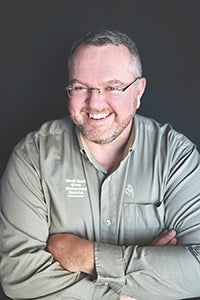Guest Column: Project plans align with district, state goals
Published 7:00 pm Monday, October 7, 2019
Guest Column, By Andy Henschel
Regarding the recent article “Too Close for Comfort” that was published in the Albert Lea Tribune on Thursday, Oct. 3, the district would like to take some time to clarify a few purported “facts” that were presented.

From the creation of the Shell Rock River Watershed District in 2003, the district has been focused on improving water quality and habitat within the watershed boundary, which is located in Freeborn County. From the date of creation the district has received, or helped receive, grants totaling $31,741,939 (2018 SRRWD Annual Report). With this funding, numerous large- and small-scale projects have been installed to benefit not only water quality, but also improve habitat conditions and water resources for local residents.
The district’s goal of the Church Lake property is to benefit water quality by replacing agricultural ground with native prairie and pollinator plantings, improve the condition of the wetlands and hope to conduct tile breaks to allow natural drainage and treatment, as well as hold water upstream on the landscape during flooding events. All of these action items, plus many more, are listed in the district’s approved water management plan that can be found at www.shellrock.org. Among other things, the district welcomes the opportunity to work with landowners who want to make a difference, and the current landowners would like the property to be restored and open to the public.
Many additional goals of the project are to have permanent protection of the oak savanna woodlands as well as protection of the current wetlands. It has been stated that the property is under current protection by the Wetland Conservation Act and Shoreland Ordinance; however, the Wetland Conservation Act does not protect the wetland as a whole because partial filling of the wetlands can be completed with sequencing and an approved replacement plan (MN State Statute Chapter 8420). Also, the shoreland ordinance of Freeborn County does allow limited tree clearing within 150 feet of a shoreline. Outside of that 150 foot setback, there is limited protection. This means that potentially 15 acres of oak woodlands could be removed for such uses as building a home or putting under plow. Currently, the oak savanna landscape is one of Minnesota’s rarest wildlife habitats and houses 93 species in greatest conservation need (MN DNR-Comprehensive Wildlife Conservation Strategy).
Not only does this project align with the local plans of the district, it follows perfectly with the Lessard-Sams Outdoor Heritage Council priority actions, in which the funding for this project came from. The council’s goal, found directly on its website, www.lsohc.leg.mn, lists the funds are to be used “for the benefit of Minnesotans … and may be spent only to restore, protect and enhance wetlands, prairies, forests and habitat for fish, game, and wildlife.”
As always, the district has been transparent in the process. We post all meetings, special meetings, hearings and bids legally following Minnesota Statute. All notices are put in the Albert Lea Tribune and are posted in the district’s office, and meetings are broadcasted on the local community channel. Many other non-governmental organizations such as Pheasants Forever, Ducks Unlimited, National Land Trust, the Nature Conservancy and many others buy ground to accomplish the same slated outcomes. In the last five years, there have been numerous larger and smaller land acquisitions that are closer to dwellings, subdivisions and municipal city limits and affect more populations than this property. This property is listed for agricultural use. It is permitted to include “any conservation areas, including water supply works, flood control or watershed protection works, fish or game hatcheries, forest preserves or game refuges” (Freeborn County ordinances). If there was a land use change, the district would have to notify neighboring landowners of such change; however, this project of conservation and restoration is an acceptable use as currently zoned and, therefore, is not a land use change and does not require rezoning or permits.
Once restoration and enhancement projects are completed, the grant source, which is funded by public dollars, requires the property to be turned over to the public for them to enjoy and benefit from. As far as the tax base goes, Freeborn County still receives payments from the state in PILT — payment In lieu of taxes — payments. The PILT payment is based on the amount of ground that is in state ownership for each county. Its payment rate is the greater of $5.13 per acre or three-fourths of 1% of the appraised value (MN DNR PILT FAQ). For the first five years after being transferred to the DNR, the PILT payment is based off of the dollar amount purchased. After that time period, it is based off of assessed value. In fact, if the property was purchased for $1,600 an acre or more, the property tax payments to Freeborn County would increase over that five-year term.
In regards to what local dollars will be spent? The grant the district received is $2,046,000 and aims to complete three different projects. The local match the district lists is 4.89% of the total grant fund, which is $100,000. Of this $100,000, approximately less than a third will go towards the Church Lake property. It has been stated that the district has $800,000 toward this project and that is just simply not true. Looking at the LSOHC work plan for the phase 8 proposal, acquisition and restoration costs for this property is listed at $609,000 (LSOHC website-FY 2020, HRE 05 Accomplishment Plan). These funds include the property purchase, upland restoration and wetland enhancement and restoration.
This project benefits water quality and natural habitat and provides true permanent protection of habitats, and the public use by every person for generations to come.
Andy Henschel is the administrator of the Shell Rock River Watershed District.

